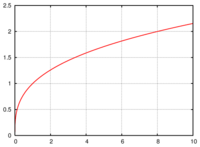ABE Math Tutorials/Whole numbers/Introduction to algebra
Introduction to Algebra
| Whole numbers |
Introduction | Place value | Rounding | Long addition & subtraction | Long Multiplication | Long division | Expressing operations | Word problems | Order of operations | "Set-up" problems | Cost and distance problems | Introduction to algebra | Powers of 10 | Estimation | Not enough info | Homework
|
Introduction
You should have completed the lesson on Cost and Distance Problems before you work on this lesson. In that lesson, we started to work with the cost formula and the distance formula. Formulas are a handy way of showing how certain numbers are related, like distance, rate, and time. In a formula, we use a letter (like d, r, or t) to indicate the number that we need to find.
Objective
Letters are actually used a lot in mathematics. Letters are used to indicate "the number that we need to find" in many calculations. In elementary or public school, you probably saw question marks ( ? ) used the same way, like this:
Summary
| instead; and we | cell2 | cell3 |
| cell3 | cell4 | cell5 |
4 + 3 = ? Or maybe like this: 7 + ? = 9 But in the higher grades, we use a letter (often the letter "x") instead; and we call this algebra. Here are a few examples: Question: 4 + x = 10 Answer: x = 6 because 4 + 6 = 10 Another one: Question: x - 5 = 8 Answer: x = 13 (...because 13 - 5 = 8) Template:Activity2Are you fine?
We can use " x " with multiplication and division problems, too: 7(x) = 21
Conclusion
Remember that we read this question as "7 times x = 21. In this case, x = 3, because 7 x 3 = 21 And, for division: 32 ÷ x = 4 x = 8 (...because 32 ÷ 8 = 4)
